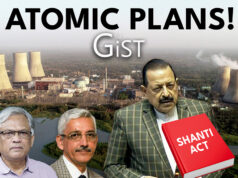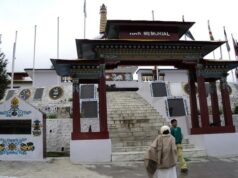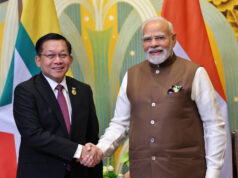“South Asia is less connected than it was before the British left the region. That was because the whole of the region was one and there was proper connectivity,” explains Dr Pramod Jaiswal, Research Director at Nepal Institute for International Cooperation and Engagement. But “after Independence the region is less connected.”
“But recently, connectivity, more so cross border connectivity, is being prioritised,” he says. “If you look at Nepal and India, People on both sides of the border are demanding better connectivity—be it rail, road, power, water, or even digital connectivity.”
According to him, earlier, there were political issues and a strong security focus, but now connectivity is back in focus, and even old connections like railway lines are being revived.
This started after India’s economic liberalisation began in the early 1990s, when India opened up its economy. But the effect can be seen over the last decade, when Prime Minister Narendra Modi decided to ramp up connectivity as part of the Neighbourhood First policy, he says.
When it comes to Nepal, which is landlocked with China’s Tibet Autonomous Region to the north and India to the east, south, and west, land connectivity becomes even more critical. India is not only Nepal’s largest trading partner, even items which it imports from other countries have to travel overland from the port of Calcutta to Nepal, bar of course the few items which are flown in directly.
India and Nepal also share a unique open border relationship which allows citizens to cross without visas and other documentation. Of late “this has become more securitised, but people can still cross the border without many obstacles,” says Jaiswal.
In fact, people talk about the European model, but “Nepal and India don’t just have an open border, they have free movement of people, they can live and work in each other’s countries, cross border marriages are common and intense, and then of course Nepalis are serving in the Indian security forces as Gorkha regiments, the chief of Nepal Army is chief of staff of Indian army and vice versa, so there are several unique features to this relationship,” he says.
India’s Agniveer scheme, which aims to cut pension costs through a tour of duty kind of plan, has led to the Nepal government deciding not to let more Gorkhas enlist in the Indian forces. While arguing that India should not apply the schemes to Gorkhas to retain this unique security relationship, Jaiswal says this does not impact the overall connectivity efforts. He also says the territorial issue over Kalapani, which has been festering since the late 1960s, and blew up after Defence minister Rajnath Singh inaugurated a road in the region during the Covid pandemic period, should be revolved diplomatically, and not be hijacked by petty politics.
He also feels India should not be unduly worried about the growing Chinese influence in Nepal, saying that like most countries in the region and the world, Nepal sees China as an economic opportunity. But apart from the “Himalayan barrier” which is a major obstacle to Nepal-China connectivity, “We are far different in terms of political philosophy, culture..” he says. While China has been reaching out to Nepal, and there has been more engagement, sometimes, ‘the China-Nepal relations are exaggerated.”
In fact, he argues, “China should have to wait for another 100 years before comparing the relationship with the Indo-Nepal relationship.”
So why does Nepal want to review the Treaty of Peace and Friendship, signed way back in 1950? Why does Nepal remain underdeveloped despite being sandwiched between two of the largest economies in the world?
Watch the full interview to understand the dynamics at play in the relationship between India and Nepal, particularly in terms of connectivity, and the opportunities and challenges that lie ahead.
In a career spanning three decades and counting, Ramananda (Ram to his friends) has been the foreign editor of The Telegraph, Outlook Magazine and the New Indian Express. He helped set up rediff.com’s editorial operations in San Jose and New York, helmed sify.com, and was the founder editor of India.com.
His work has featured in national and international publications like the Al Jazeera Centre for Studies, Global Times and Ashahi Shimbun. But his one constant over all these years, he says, has been the attempt to understand rising India’s place in the world.
He can rustle up a mean salad, his oil-less pepper chicken is to die for, and all it takes is some beer and rhythm and blues to rock his soul.
Talk to him about foreign and strategic affairs, media, South Asia, China, and of course India.




